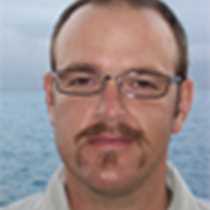Chinese Hat and Santiago Islands
This morning as the equatorial sun bathed us with a morning glow we noticed a drastic change in the landscape. During this expedition we have navigated from the oldest to the youngest islands and today we have encountered an otherworldly coast with fresh basalt lava flows and violently created spatter cones. Chinese Hat was created from an underwater fissure that relieved pressure from the island of Santiago while creating a conical cone. As we traveled in the Zodiacs along this barren area we came across shearwaters, noddies, and various heron species that were all starting their morning foraging runs. The clarity of the water was incredible as we were able to observe to depths of up to 10 meters with surgeon fish and king angel fish making an appearance.
Upon our return to the ship we divided our groups with beach enthusiasts landing on Chinese Hat and the other group snorkeling in the narrow channel that separates the two islands. After the initial adjustment to the cooler waters of the western islands we were treated to a unique biodiversity. A white tipped reef shark passed below us as a spotted eagle ray upturned the sandy bottom looking for small crustaceans. Aggregations of small cardinal fish and black stripped salemas (an endemic fish species) hovered over the coastal tidal zone. A small tiger snake eel poked his head from a bolder pile and searched for prey while yellow tailed damsel fish protected their algae gardens. Upon our return we were greeted by our barman Jimmy with our traditional hot chocolate and snacks that we just tried to keep off by swimming. Captain Pablo navigated close to a member of the Bainbridge Islands where from the National Geographic Islander we could peer into a brackish pond and find flamingos that just landed close to shore.
The afternoon brought us closer to the rough and new terrain of Santiago Island. Our afternoon hike was on a very recent basalt lava flow that was laid down just over one-hundred years ago. Pahoe-hoe lava was under our feet as we headed inland and we found life upon this desolate area. Small pioneer plants have taken hold of this area and have started their process of soil production. Farther inland we found the lava twisting and folding with the shapes frozen in time. Molds of fallen candelabra cacti were found in the basalt with their bark forms cast in stone. As the grey sky closed in we were elated to find Galápagos penguins coming out of the water to finish their day, and we realized that life prevails in even the harshest environments.




